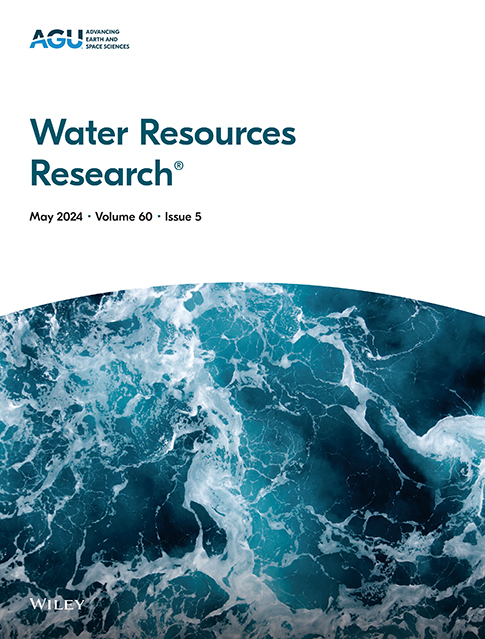Hydrodynamic Processes of Incipient Meander Chute Cutoffs: Laboratory Experiments With Implications for Morphodynamics and Depth-Averaged Modeling
IF 4.6
1区 地球科学
Q2 ENVIRONMENTAL SCIENCES
引用次数: 0
Abstract
Meander chute cutoffs are a common and geomorphically important feature of meandering rivers, exhibiting complex dynamics and distinctive morphologic features. To date, however, the geomorphic processes governing the evolution and formation of these features are poorly understood due to limited knowledge of cutoff hydrodynamics. This paper investigates three-dimensional mean flow structure, turbulent flow structure, and bed shear stress distribution from high-resolution flow velocity data in a fixed-bed, sediment-free physical model. The results show that (a) the chute channel conveys around 1.4 times the unit-width flow discharge as the cutoff bend; (b) mean flow structure is highly three-dimensional, with strong convective acceleration throughout the bends and pronounced flow separation zones in both the chute channel and the cutoff bend; (c) turbulent kinetic energy is intense at shear layers bounding the flow separation zones at several locations in the channel; and (d) bed shear stress is elevated due to strong turbulence in the chute channel and is low in the cutoff bend. The unique hydrodynamics of meander chute cutoffs explains their distinctive morphologic behaviors, including the rapid widening and deepening of chute channels and locations of bars and pools. Moreover, this paper compares quantitatively the depth-averaged flow structure before and after the cutoff, demonstrating that cross-sectional redistribution of streamwise momentum by secondary flow remains largely unchanged in the presence of the chute channel. This implies that 2D depth-averaged hydrodynamic models, parameterized and calibrated for secondary flow in single-channel meanders, are suitable for simulating flow within chute cutoffs.初生蜿蜒槽截流的水动力过程:实验室实验对形态动力学和深度平均模型的影响
蜿蜒槽断流是蜿蜒河流中常见的重要地貌特征,具有复杂的动力学特征和独特的形态特征。然而,迄今为止,由于对截流流体力学的了解有限,人们对这些地貌的演变和形成过程知之甚少。本文通过固定床无沉积物物理模型中的高分辨率流速数据,研究了三维平均流结构、湍流结构和床面剪应力分布。结果表明:(a) 滑道输送的流量约为单位宽度流量的 1.4 倍;(b) 平均水流结构高度三维,整个弯道都有很强的对流加速度,滑槽水道和截流弯道都有明显的水流分离区;(c) 在水道的几个位置,水流分离区边界的剪切层有很强的湍流动能;(d) 由于滑槽水道有很强的湍流,床面剪应力很高,而截流弯道的剪应力很低。蜿蜒槽断流的独特流体力学解释了其独特的形态行为,包括槽道的快速变宽和变深,以及条石和水潭的位置。此外,本文还对截流前后的深度平均水流结构进行了定量比较,结果表明,二次流对流向动量的横截面再分布在截流槽存在的情况下基本保持不变。这意味着,针对单河道蜿蜒中的次级流进行参数化和校准的二维深度平均水动力模型适用于模拟滑道截流内的水流。
本文章由计算机程序翻译,如有差异,请以英文原文为准。
求助全文
约1分钟内获得全文
求助全文
来源期刊

Water Resources Research
环境科学-湖沼学
CiteScore
8.80
自引率
13.00%
发文量
599
审稿时长
3.5 months
期刊介绍:
Water Resources Research (WRR) is an interdisciplinary journal that focuses on hydrology and water resources. It publishes original research in the natural and social sciences of water. It emphasizes the role of water in the Earth system, including physical, chemical, biological, and ecological processes in water resources research and management, including social, policy, and public health implications. It encompasses observational, experimental, theoretical, analytical, numerical, and data-driven approaches that advance the science of water and its management. Submissions are evaluated for their novelty, accuracy, significance, and broader implications of the findings.
 求助内容:
求助内容: 应助结果提醒方式:
应助结果提醒方式:


